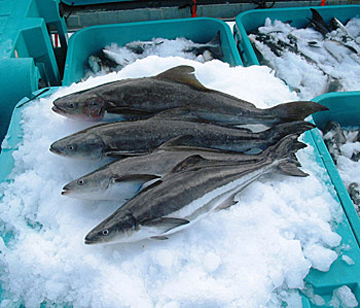It’s hard to find a meat product these days that doesn’t have a soy-based equivalent — from burgers and chicken nuggets to bacon strips and chorizo. There aren’t a lot of soy substitutes for fish, though. But in the future it may not matter all that much, because many fish may be raised on a soy-based diet.
 Fish farm raised Cobia. Credit: National Oceanic and Atmospheric Administration
Fish farm raised Cobia. Credit: National Oceanic and Atmospheric AdministrationMuch of the world’s seafood is actually “farmed” — the fish are reared in cages or in pens in the open ocean. Much of their food is made from fish oil and fishmeal — ground up anchovies, sardines, or other small fish. But supplies of these fish are dwindling. And on average, it takes two pounds of small fish to yield a pound of big fish.
So fish farm operators are looking for new ways to feed their stock. One is products based on soy. In fact, some species of farm-raised fish are already eating chow that uses soy in place of some of the fishmeal. And similar foods are being tested on other species, such as yellowtail, flounder, sea bass, and salmon.
There are some challenges to overcome. Some compounds in soy beans can interfere with a fish’s ability to digest food, or they destroy beneficial omega-3 fatty acids. So the soy beans must be specially processed to compensate for the problems. And in the future, scientists may develop new soy strains that overcome the problems.
If it all works out, soy-based feeds may help reduce the cost of farm-raised fish while helping replenish natural stocks of small fish. We’ll leave it to others to decide whether fish raised on soy qualify as vegan.

